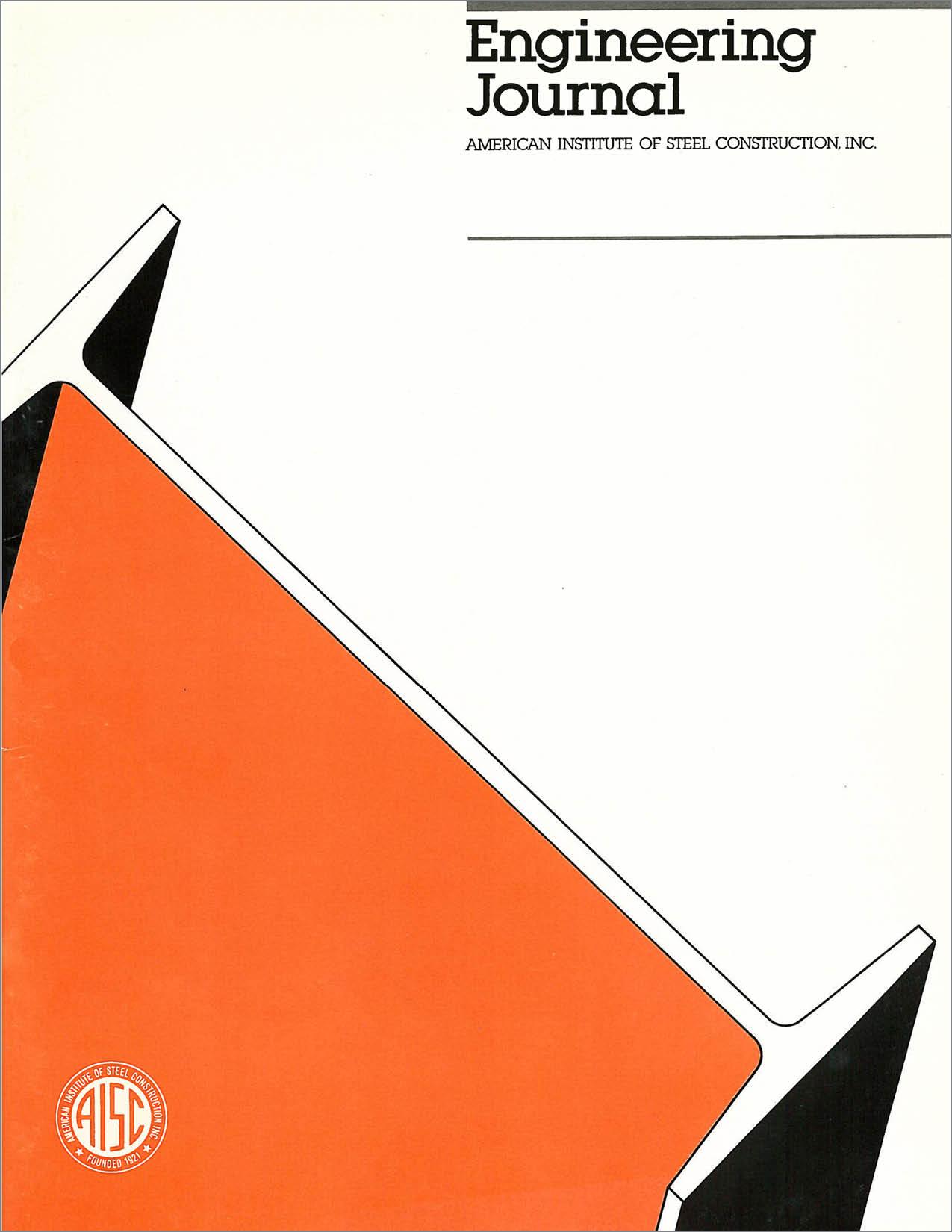Simple Equations for Effective Length Factors
DOI:
https://doi.org/10.62913/engj.v29i3.592Abstract
In theory at least, the design of a column or of a beam-column starts with the evaluation of the elastic restraints at both ends of the column, from which the effective length factor K is then derived. To get a K-factor, the designer is much more likely to use the two charts provided in the Column Design section of the AISC Manuals, rather than to solve the transcendental equations on which the charts are based. However, having to read K-factors from an alignment chart in the middle of an electronic computation, in a spreadsheet for instance, prevents full automation and can be a source of errors. The fact that spreadsheets cannot accept so-called circular references makes their use awkward for the automatic solution of transcendental equations. A side benefit of an excellent article by Barakat and Chen was the demonstration of how powerful an engineering tool the electronic spreadsheet can be: it automates many routine calculations, and it is well suited for tedious column and beam-column calculations. Barakat and Chen did not elaborate on how they obtained the K-factors used in their examples; from the context, it seems that the factors were manually entered into the spreadsheet. Obviously, it would be convenient to have simple equations take the place of the charts in the AISC Manuals. The American Concrete Institute4 does publish equations, but their lack of accuracy may be why they seem not to be used in steel design. Better equations have been available in the French Design Rules for Steel Structures5 since 1966, and have been included in the European Recommendations6 of 1978, with only a change in notation. These equations are accurate, yet simple enough to be easily programmed within the confines of a spreadsheet cell. For this reason, they may be useful to North American engineers.

